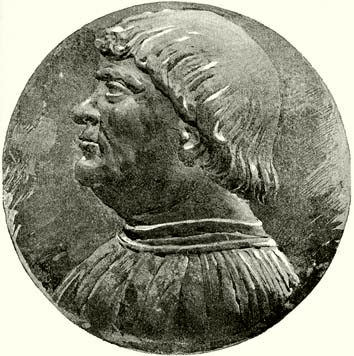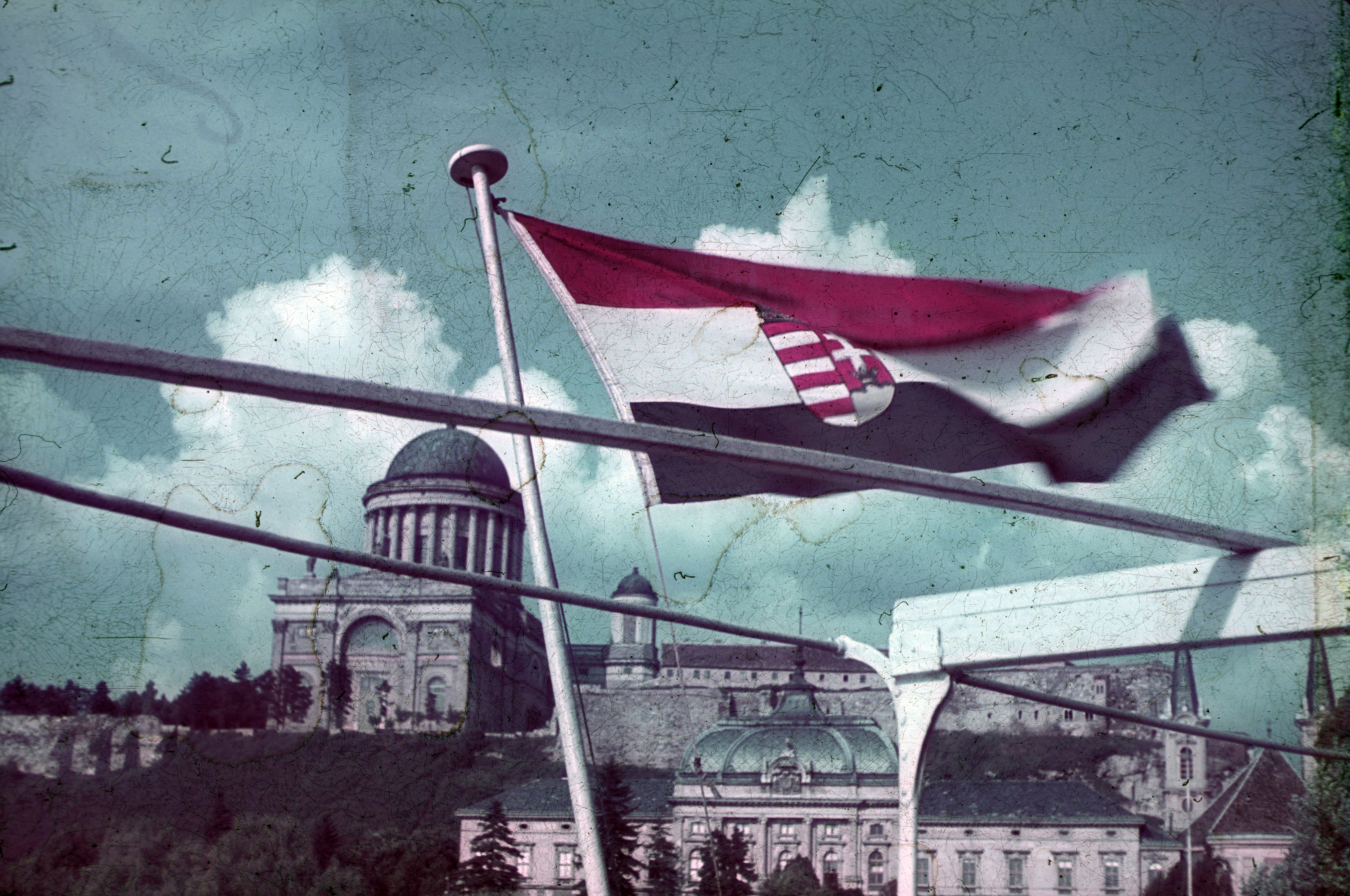|
Tamás Bakócz
Tamás Bakócz (1442, in Erdőd15 June 1521, in Esztergom) was a Hungarian archbishop, cardinal and statesman. He was the son of a wagoner and was adopted by his uncle, who trained him for the priesthood and whom he succeeded as rector of Tétel (1480). He studied in Breslau and Padua. Shortly afterwards he became one of the secretaries of King Matthias Corvinus, who made him bishop of Győr and a member of the royal council (1490). Under Vladislaus II of Bohemia and Hungary (1490–1516) he became successively bishop of Eger, the richest of the Hungarian sees, archbishop of Esztergom (1497), cardinal (1500), and titular Latin Patriarch of Constantinople (1510). From 1490 to his death in 1521 he was the leading statesman of Hungary and mainly responsible for foreign policy. It was solely through his efforts that Hungary did not accede to the league of Cambrai, was consistently friendly with Venice, and formed a family compact with the Habsburgs. He was also the only Magy ... [...More Info...] [...Related Items...] OR: [Wikipedia] [Google] [Baidu] |
Habsburgs
The House of Habsburg (), alternatively spelled Hapsburg in Englishgerman: Haus Habsburg, ; es, Casa de Habsburgo; hu, Habsburg család, it, Casa di Asburgo, nl, Huis van Habsburg, pl, dom Habsburgów, pt, Casa de Habsburgo, la, Domus Habsburg, french: Maison des Habsbourg and also known as the House of Austriagerman: link=no, Haus Österreich, ; es, link=no, Casa de Austria; nl, Huis van Oostenrijk, pl, dom Austrii, la, Domus Austriæ, french: Maison d'Autriche; hu, Ausztria Háza; it, Casa d'Austria; pt, Casa da Áustria is one of the most prominent and important dynasties in European history. The house takes its name from Habsburg Castle, a fortress built in the 1020s in present-day Switzerland by Radbot of Klettgau, who named his fortress Habsburg. His grandson Otto II was the first to take the fortress name as his own, adding "Count of Habsburg" to his title. In 1273, Count Radbot's seventh-generation descendant Rudolph of Habsburg was elected King of th ... [...More Info...] [...Related Items...] OR: [Wikipedia] [Google] [Baidu] |
Ippolito D'Este
Ippolito (I) d'Este ( hu, Estei Hippolit; 20 March 1479 – 3 September 1520) was an Italian Roman Catholic cardinal, and Archbishop of Esztergom. He was a member of the ducal House of Este of Ferrara, and was usually referred to as the Cardinal of Ferrara. Though a bishop of five separate dioceses, he was never consecrated a bishop. He spent much of his time supporting the ducal house of Ferrara and negotiating on their behalf with the Pope. Biography Born in Ferrara, Ippolito was the son of Duke Ercole I d'Este, Duke of Ferrara, and Eleanor of Naples, daughter of Ferdinand I of Naples. His eldest brother, Alfonso became duke in 1505 (and married Lucrezia Borgia). He had another brother, Ferdinando, a brother Sigismondo, and two sisters, Beatrice (who married Ludovico Sforza) and Isabella (who married Duke Francesco of Mantua). He also had a half-brother, Giulio, and a half-sister, Lucrezia. Youth From infancy Ippolito was destined for a career in the Church, and at th ... [...More Info...] [...Related Items...] OR: [Wikipedia] [Google] [Baidu] |
Pannonhalma Archabbey
The Benedictine Pannonhalma Archabbey or Territorial Abbey of Pannonhalma (lat. ''Archiabbatia'' or ''Abbatia Territorialis Sancti Martini in Monte Pannoniae'') is a medieval building in Pannonhalma, one of the oldest historical monuments in Hungary. Founded in 996, it is located near the town, on top of a hill (282 m). Saint Martin of Tours is believed to have been born at the foot of this hill, hence its former name, Mount of Saint Martin ( hu, Márton-hegy), from which the monastery occasionally took the alternative name of Márton-hegyi Apátság. This is the second largest territorial abbey in the world, after the one in Monte Cassino. Its sights include the Basilica with the Crypt (built in the 13th century), the Cloisters, the monumental Library with 360,000 volumes, the Baroque Refectory (with several examples of ''trompe-l'œil'') and the Archabbey Collection (the second biggest in the country). Today there are about 50 monks living in the monastery. The abbey is s ... [...More Info...] [...Related Items...] OR: [Wikipedia] [Google] [Baidu] |
Esztergom Basilica
The Primatial Basilica of the Assumption of the Blessed Virgin Mary and St Adalbert ( hu, Nagyboldogasszony és Szent Adalbert prímási főszékesegyház), also known as the Esztergom Basilica ( hu, Esztergomi bazilika), is an ecclesiastic basilica in Esztergom, Hungary, the mother church of the Archdiocese of Esztergom-Budapest, and the seat of the Catholic Church in Hungary. It is dedicated to the Assumption of Saint Mary and Saint Adalbert. It is the largest church and the tallest building in Hungary. Its inner area is 5,600 m². It is 118 m long and 49 m wide. It has a reverberation time of more than 9 seconds. Its dome, forming a semi-sphere, is situated in the middle, and it has 12 windows. It is 71.5 m high inside (which makes it one of the tallest domes in the world), with a diameter of 33.5 metres, and is 100 m high from outside, the stairs count 400 steps counted from the crypt. The altarpiece (13.5 × 6.6 metres, depicting t ... [...More Info...] [...Related Items...] OR: [Wikipedia] [Google] [Baidu] |
Jacquerie
The Jacquerie () was a popular revolt in late-medieval Europe, popular revolt by peasants that took place in northern France in the early summer of 1358 during the Hundred Years' War. The revolt was centred in the valley of the Oise (river), Oise north of Paris and was suppressed after a few weeks of violence. This rebellion became known as "the Jacquerie" because the nobles derided peasants as "Jacques" or "Jacques Bonhomme" for their padded surplice, called a "Gambeson, jacque". The aristocratic chronicler Jean Froissart and his source, the chronicle of Jean Le Bel, Jean le Bel, referred to the leader of the revolt as Jacque Bonhomme ("Jack Goodfellow"), though in fact the Jacquerie 'great captain' was named Guillaume Cale. The word ''jacquerie'' became a synonym of peasant uprisings in general in both English and French. Background After the capture of the French king (John II of France, John II, Froissart's ''bon roi Jean'' "good king John") by the English during the Battle ... [...More Info...] [...Related Items...] OR: [Wikipedia] [Google] [Baidu] |
Ottoman Empire
The Ottoman Empire, * ; is an archaic version. The definite article forms and were synonymous * and el, Оθωμανική Αυτοκρατορία, Othōmanikē Avtokratoria, label=none * info page on book at Martin Luther University) // CITED: p. 36 (PDF p. 38/338) also known as the Turkish Empire, was an empire that controlled much of Southeast Europe, Western Asia, and North Africa, Northern Africa between the 14th and early 20th centuries. It was founded at the end of the 13th century in northwestern Anatolia in the town of Söğüt (modern-day Bilecik Province) by the Turkoman (ethnonym), Turkoman tribal leader Osman I. After 1354, the Ottomans crossed into Europe and, with the Ottoman wars in Europe, conquest of the Balkans, the Ottoman Anatolian beyliks, beylik was transformed into a transcontinental empire. The Ottomans ended the Byzantine Empire with the Fall of Constantinople, conquest of Constantinople in 1453 by Mehmed the Conqueror. Under the reign of Sule ... [...More Info...] [...Related Items...] OR: [Wikipedia] [Google] [Baidu] |
Crusade
The Crusades were a series of religious wars initiated, supported, and sometimes directed by the Latin Church in the medieval period. The best known of these Crusades are those to the Holy Land in the period between 1095 and 1291 that were intended to recover Jerusalem and its surrounding area from Islamic rule. Beginning with the First Crusade, which resulted in the recovery of Jerusalem in 1099, dozens of Crusades were fought, providing a focal point of European history for centuries. In 1095, Pope Urban II proclaimed the First Crusade at the Council of Clermont. He encouraged military support for Byzantine emperor AlexiosI against the Seljuk Turks and called for an armed pilgrimage to Jerusalem. Across all social strata in western Europe, there was an enthusiastic response. The first Crusaders had a variety of motivations, including religious salvation, satisfying feudal obligations, opportunities for renown, and economic or political advantage. Later crusades were ... [...More Info...] [...Related Items...] OR: [Wikipedia] [Google] [Baidu] |
Pope Leo X
Pope Leo X ( it, Leone X; born Giovanni di Lorenzo de' Medici, 11 December 14751 December 1521) was head of the Catholic Church and ruler of the Papal States from 9 March 1513 to his death in December 1521. Born into the prominent political and banking Medici family of Florence, Giovanni was the second son of Lorenzo de' Medici, ruler of the Florentine Republic, and was elevated to the cardinalate in 1489. Following the death of Pope Julius II, Giovanni was elected pope after securing the backing of the younger members of the Sacred College. Early on in his rule he oversaw the closing sessions of the Fifth Council of the Lateran, but struggled to implement the reforms agreed. In 1517 he led a costly war that succeeded in securing his nephew Lorenzo di Piero de' Medici as Duke of Urbino, but reduced papal finances. In Protestant circles, Leo is associated with granting indulgences for those who donated to reconstruct St. Peter's Basilica, a practice that was soon chall ... [...More Info...] [...Related Items...] OR: [Wikipedia] [Google] [Baidu] |
Papal Legate
300px, A woodcut showing Henry II of England greeting the pope's legate. A papal legate or apostolic legate (from the ancient Roman title ''legatus'') is a personal representative of the pope to foreign nations, or to some part of the Catholic Church. He is empowered on matters of Catholic faith and for the settlement of ecclesiastical matters. The legate is appointed directly by the pope—the bishop of Rome and head of the Catholic Church. Hence a legate is usually sent to a government, a sovereign or to a large body of believers (such as a national church) or to take charge of a major religious effort, such as an ecumenical council, a crusade to the Holy Land, or even against a heresy such as the Cathars. The term ''legation'' is applied both to a legate's mandate and to the territory concerned (such as a state, or an ecclesiastical province). The relevant adjective is ''legatine''. History 200px, Cardinal Thomas Wolsey, papal legate to England during the reign of H ... [...More Info...] [...Related Items...] OR: [Wikipedia] [Google] [Baidu] |
Hungary
Hungary ( hu, Magyarország ) is a landlocked country in Central Europe. Spanning of the Carpathian Basin, it is bordered by Slovakia to the north, Ukraine to the northeast, Romania to the east and southeast, Serbia to the south, Croatia and Slovenia to the southwest, and Austria to the west. Hungary has a population of nearly 9 million, mostly ethnic Hungarians and a significant Romani minority. Hungarian, the official language, is the world's most widely spoken Uralic language and among the few non- Indo-European languages widely spoken in Europe. Budapest is the country's capital and largest city; other major urban areas include Debrecen, Szeged, Miskolc, Pécs, and Győr. The territory of present-day Hungary has for centuries been a crossroads for various peoples, including Celts, Romans, Germanic tribes, Huns, West Slavs and the Avars. The foundation of the Hungarian state was established in the late 9th century AD with the conquest of the Carpat ... [...More Info...] [...Related Items...] OR: [Wikipedia] [Google] [Baidu] |




